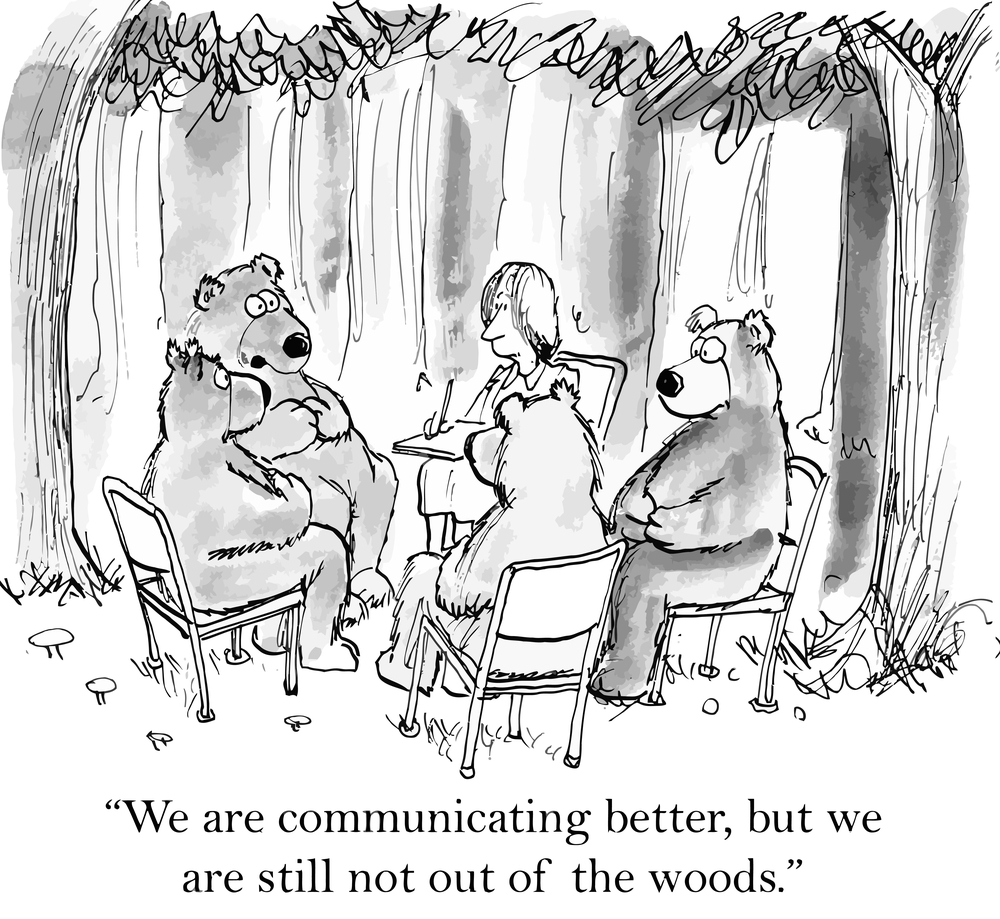{3 minutes to read} Whether you’re discussing an issue with your partner related to your day-to-day life, or at a family gathering debating topics like abortion or climate change regulations, conversations can get heated and boil over into full-blown arguments.
Here are 5 steps that you can take as you engage in difficult discussions:
- Before the conversation, acknowledge and validate your own emotions. What am I feeling? What is really upsetting me?
- Recognize how everybody is feeling about the situation, even if it’s difficult. It’s important to understand one’s feelings in addition to understanding the other person’s feelings. Acknowledge and validate the other person’s emotions.
- Prepare for a situation where the other person says something that may upset you so that you are not totally taken by surprise and can respond in a constructive way.
- Get curious with compassion. Ask lots of questions and genuinely listen to the answers.
- Engage in joint problem-solving. Once both parties have acknowledged how they’re feeling and identified why there’s an issue, come up with solutions together — so that there is buy-in from both sides.
You know that the conversation is going to be difficult. Ask yourself why you are coming together. Try to find a way to frame it (find the storyline for the conversation) in an efficient way so that the other person cannot reject it.
For example, you and your spouse have a 6-year-old and are not on the same page on a particular issue. You might say something like: “I want to make sure that we are on the same page because I know that we both want what’s best for Johnny. Let’s try and figure out the best way for us to proceed.”
In this way, you are stating a shared objective, not your personal objective. You are not saying, “I want Johnny to do this or that.” You are saying: “let’s figure out what will work best for both of us.”
Recognize the difference between the macro and the micro level.
On the micro level, there might be something specific about which you are not on the same page, but on the macro level, you share the same goals. In the framing, focus on the shared perspective, and then move to the micro and figure out a solution.
You might be acknowledging that the other person is upset, and that you care about their feelings, but they may not necessarily see that you are upset as well. You may need to let the other person know that you are looking for this acknowledgement.
In order to work toward resolving the problem, you will need to reconcile the differences between the hearts and the minds and the substantive needs — the emotional need to be heard and to be understood, and the behavior that needs to be changed.
Jennifer Safian
divorce and family mediation
upper east side of manhattan (nyc)
new york, ny
(917) 881 5206
jpsafian@gmail.com
Latest posts by Jennifer Safian (see all)
- misinterpreting your partner’s demeanor may lead to conflict - October 9, 2024
- demystifying the money talk - September 11, 2024
- why are we afraid to discuss money? - August 21, 2024






Leave A Comment